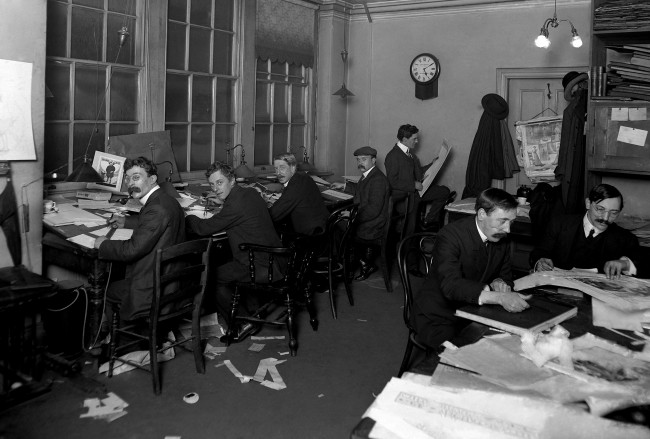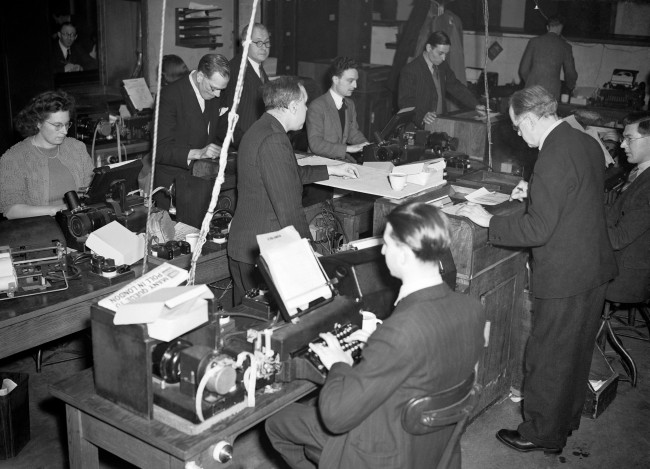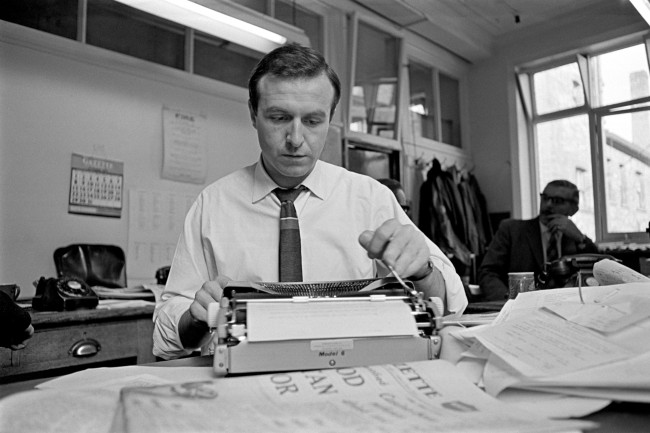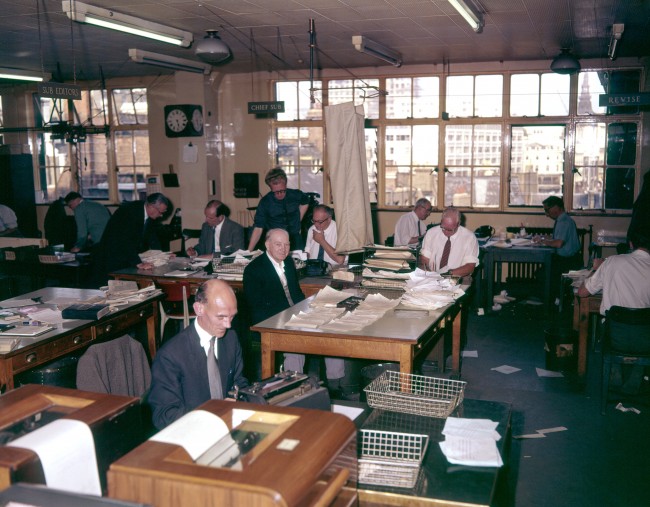In Praise Of The Newsroom Typewriter: The Journalists’ Orchestra
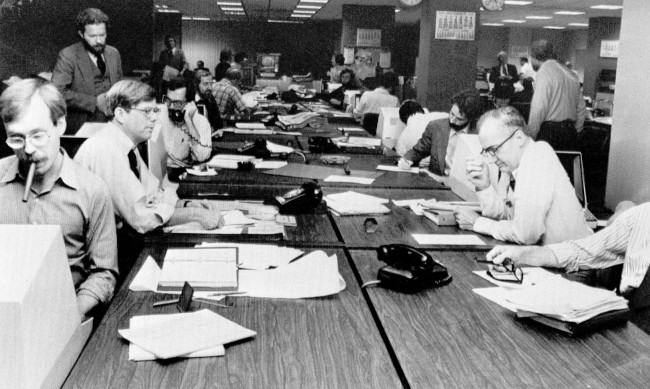
The newsroom at the New York Times is seen as editorial staffers work feverishly to prepare a Monday edition, in this Nov. 5, 1978 file photo. A reader-submitted question related to how newsrooms are alerted to breaking news stories is being answered as part of an Associated Press Q&A column called “Ask AP.” (AP Photo/Ron Frehm, File)
I LOVE newspapers. Working in a newsroom was, to me, the most exciting job I could imagine. And then it changed. I’ve been in many newsrooms and one thing holds true for all of them: they are so quiet. But the Times is trying to change all that.
To the surprise of Times journalists, a tall speaker on a stand has been erected in the newsroom to pump out typewriter sounds, to increase energy levels and help reporters to hit deadlines. The audio begins with the gentle patter of a single typewriter and slowly builds to a crescendo, with the keys of ranks of machines hammering down as the paper’s print edition is due to go to press.
The development, which was described as a “trial” today by publisher News UK, has caused some bemusement among journalists, one of whom tried unsuccessfully to turn the sound off. The idea is one of a series of experiments introduced as The Times and other News UK titles have departed Wapping for new offices in the Baby Shard, London Bridge, South London.
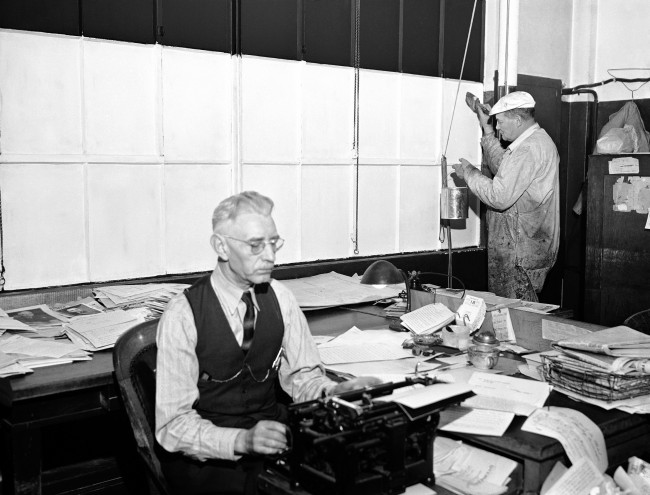
When first blackouts were ordered, Seattle Times newsroom was blacked out by painting windows with black paint. Editors found that this was a little hard on the eyes, as the black paint absorbed most of the light. Next step was “de-blacking the blackout” Dec. 19, 1941. Blackened windows were in turn painted white on the inside of the glass thus making the room much cheerier to work in. (AP Photo)
Date: 19/12/1941
…
Michael Williams, who began his newspaper career at The Times’s old offices in London’s Gray’s Inn Road in 1973, and is now a senior lecturer in journalism at the University of Central Lancashire, saw merit in the idea.
“People feel to some extent disengaged from the thrill of producing a newspaper, which is galvanising”, he said, referring to the relative quiet of modern newsrooms, where interviews might be conducted by email or instant messaging rather than phone, and where digital publishing is continuous.
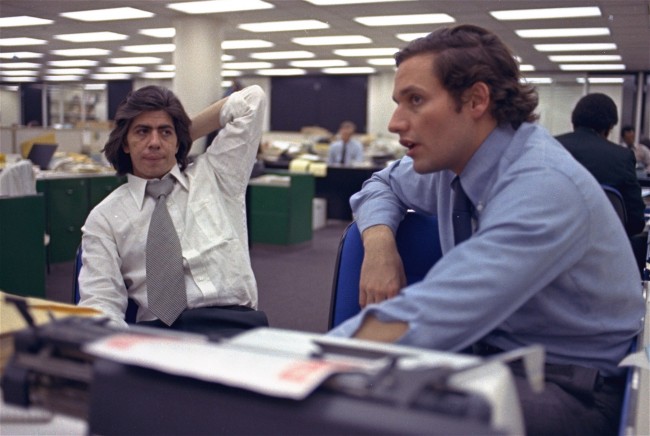
Reporters Bob Woodward, right, and Carl Bernstein, whose reporting of the Watergate case won a Pulitzer Prize, sit in the newsroom of the Washington Post, May 7, 1973. (AP Photo)
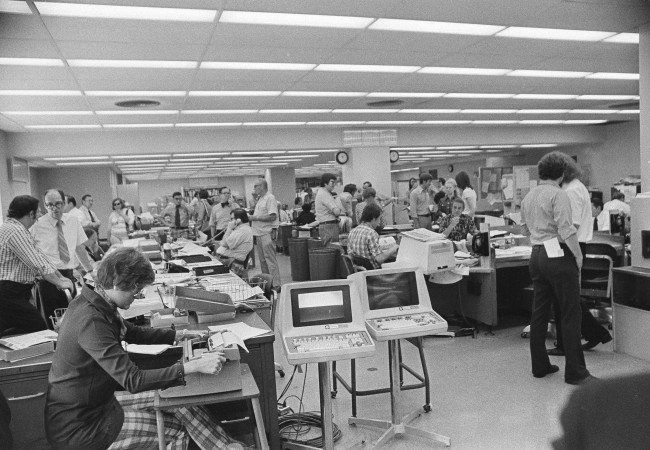
Small groups stand and talk in the editorial room of Chicago Today after it was announced that the afternoon paper will cease publication in September, Aug. 23, 1974. One of five Chicago daily newspapers, Chicago Today is owned by the Chicago Tribune, which announced that it will begin publication of an afternoon paper in September, in addition to its morning publication. (AP Photo/Larry Stoddard)
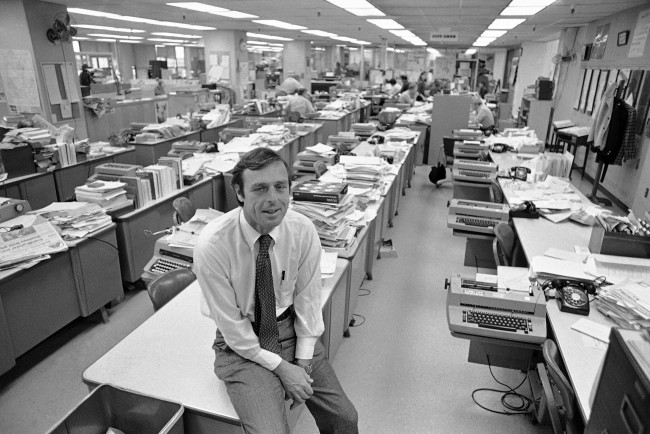
Reg Murphy, publisher of the San Francisco Examiner, in the Examiner newsroom on June 16, 1977 in San Francisco. (AP Photo/Jim Palmer)
* John Witherow, Editor of The Times, said he was “old enough to have used typewriters” and explained why he wanted to recreate the excitement of pre-digital newsrooms. “The problem with newspapers now is that keyboards are so silent you could be working in a bank or an insurance company. But newspapers are different.”
The Daily Mail newspaper in operation in room 55 at Carmelite House, Fleet Street.
Date: 01/01/1913
* According to Clinton Mills, chief executive officer of Hitcents, the Kentucky-based creative agency that developed the app, the appeal lies in hearing the rhythm of one’s work.
“Whenever you type, the sounds the typewriter makes will make you feel like you’re composing something special,” he said.
Results come pouring in via tickertape and are quickly typed into news bulletins in the results area of the Press Association’s news room, during the evening of the February 1952 General Election.
Date: 24/02/1952Blackpool’s Jimmy Armfield writing his column for the Blackpool Gazette
Date: 10/11/1967General view of the Press Association’s news room in London.
Date: 31/07/1963
* The paper’s diary editor Patrick Kidd told the BBC’s Today programme this morning that the noise was unexpected: “suddenly it was playing in the background over loudspeakers… [it’s our] editor’s wish to pay respect to our history.”
He said at first he found this “nod to our history” to be “mildly irritating” but now finds it “soothing” and on a busy day found himself typing in rhythm to the sounds.
Kidd also expressed his hope that the clatter of old typewriters might signal a return of the “stale smell of cigarette smoke” and the “three-bottle lunch”.
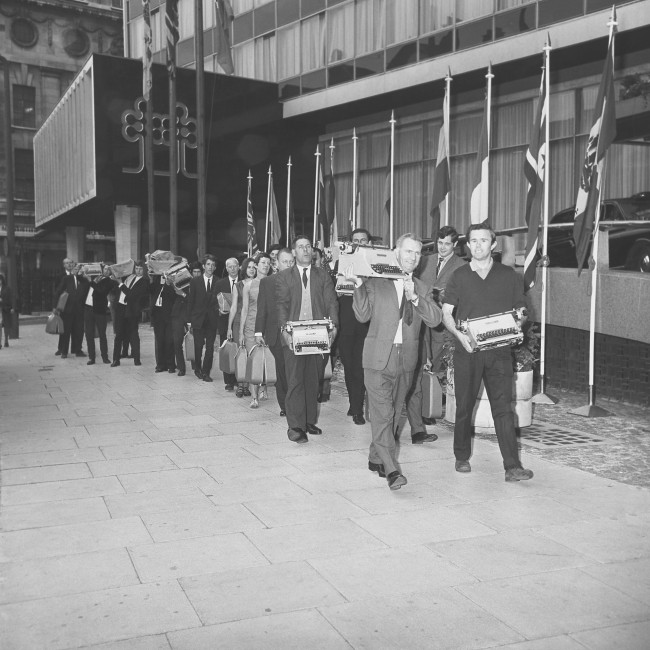
A batch of typewriters, loaned by the Imperial Typewriter Company and for use by international journalists covering the World Cup Finals, are carried into the World Cup Headquarters at the Royal Garden Hotel in Kensington
Date: 08/07/1966
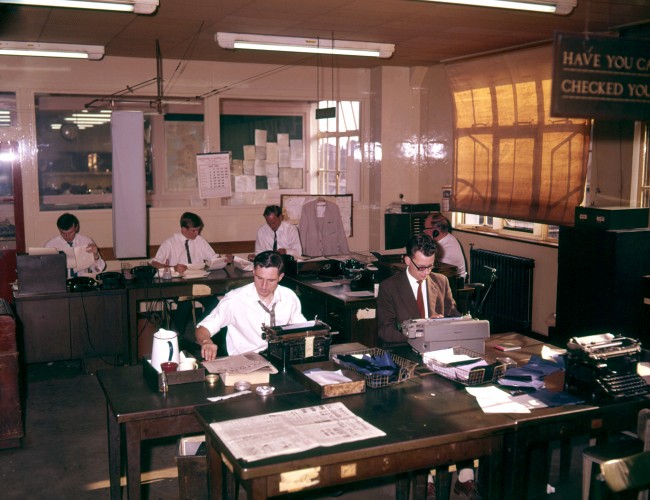
General view of the Press Association’s news room in London.
Date: 31/07/1963
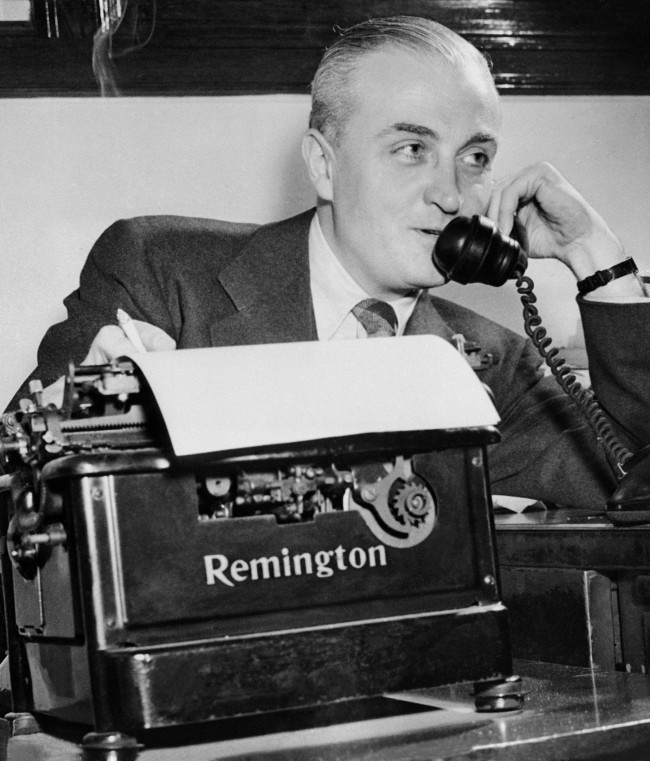
James Marlow, Washington Associated Press staffer workds at his desk, Jan. 18, 1946. (AP Photo/Byron Rollins)
Date: 18/01/1946
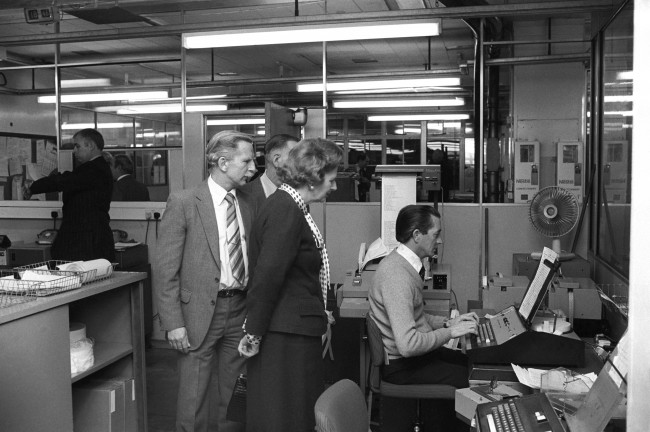
The Prime Minister, Margaret Thatcher visiting the Fleet Street offices of The Press Association, Britain’s national news agency.
Date: 02/12/1981
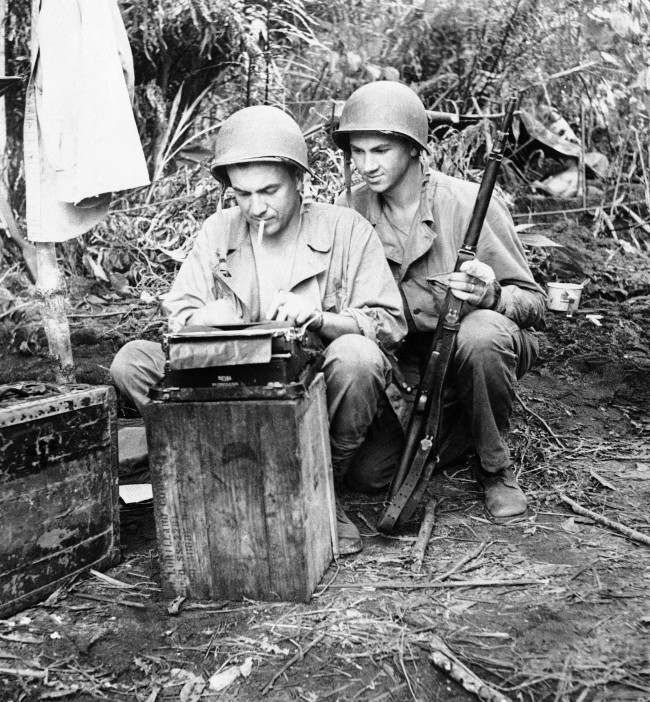
Mst. Sgt. John A. Kutcher of Portland, Ore., (right) looks on as Associated Press correspondent William F. Boni of New York works at his typewriter somewhere in New Guinea on August 5, 1943. Boni was awarded the Purple Heart decoration in recognition of wounds received on July 9 when the barge on which he was a passenger was strafed by machine guns and cannons off Nassau bay on the New Guinea coast. (AP Photo)
Date: 05/08/1943
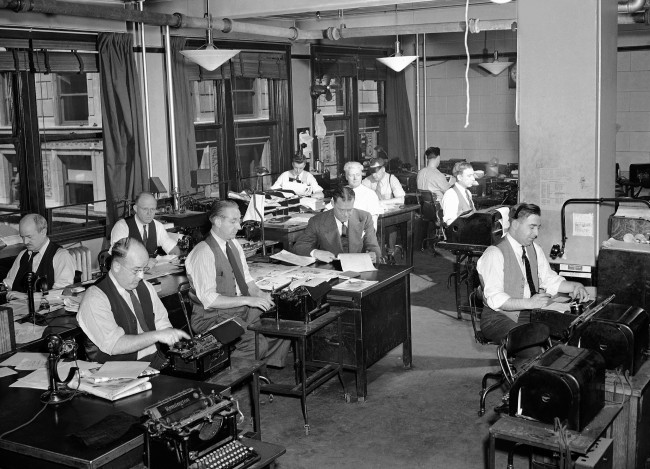
The increase of the New England area in importance as an arsenal and defense sector has greatly increased the importance of news gathered and edited by the staff of the New England bureau of the Associated Press. Rapid expediting of quick-breaking war developments throughout the world also keeps the staff busy, shown May 7, 1942. (AP Photo)
Date: 07/05/1942
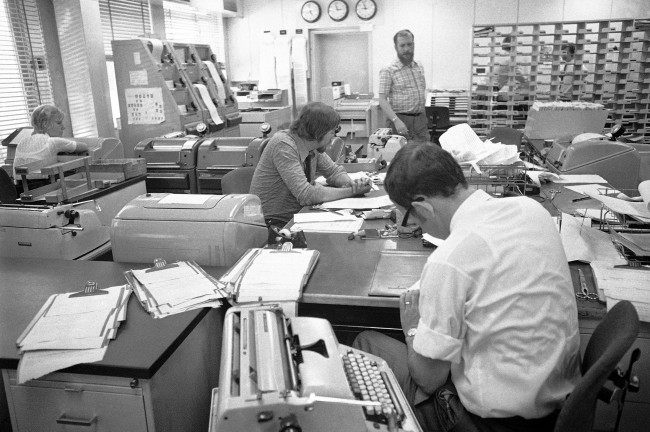
A view into the newsroom of Radio Free Europe, May 18, 1971, where news from all over the world is gathered and edited. (AP Photo)
Date: 18/05/1971
Posted: 29th, August 2014 | In: Reviews Comment | TrackBack | Permalink


